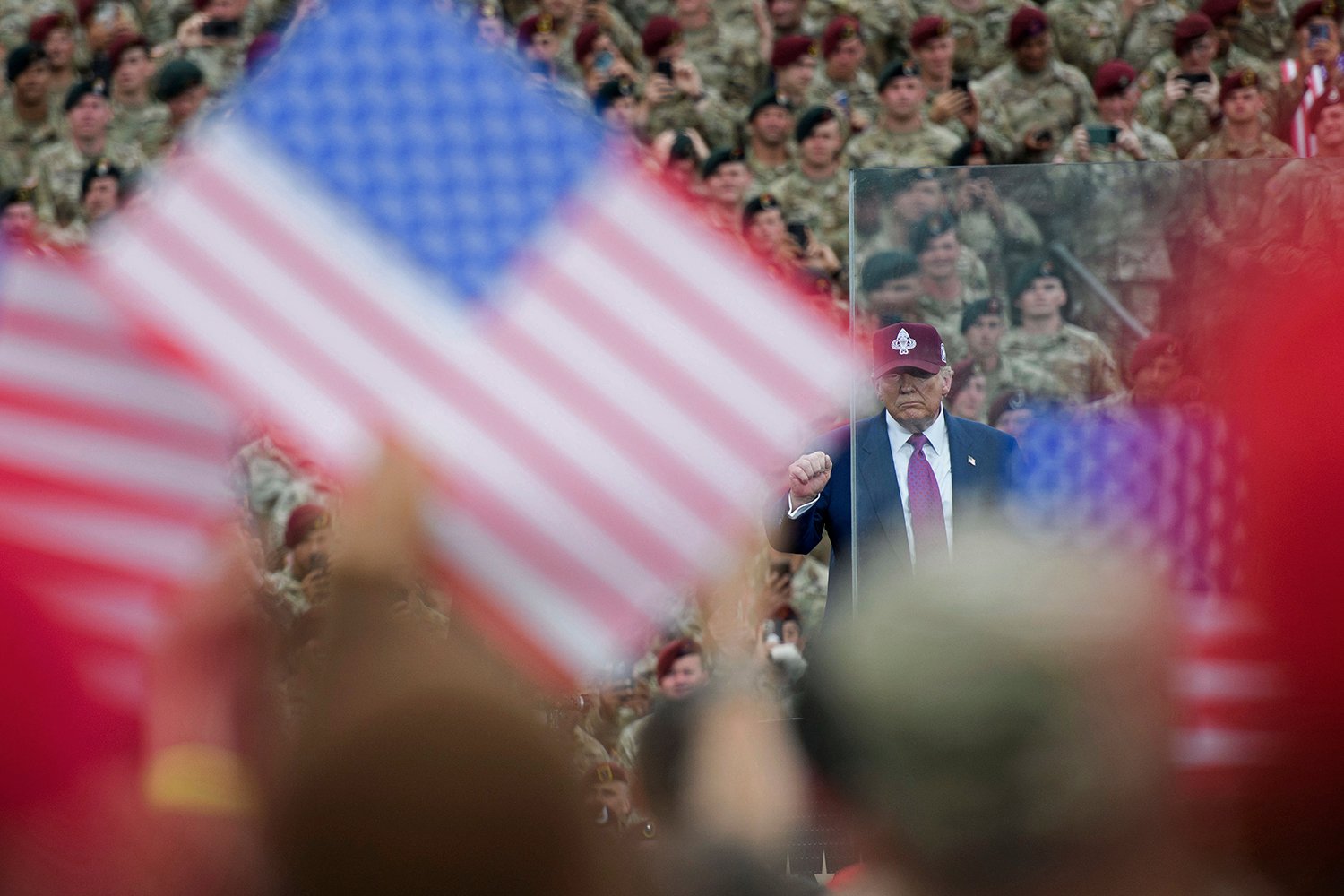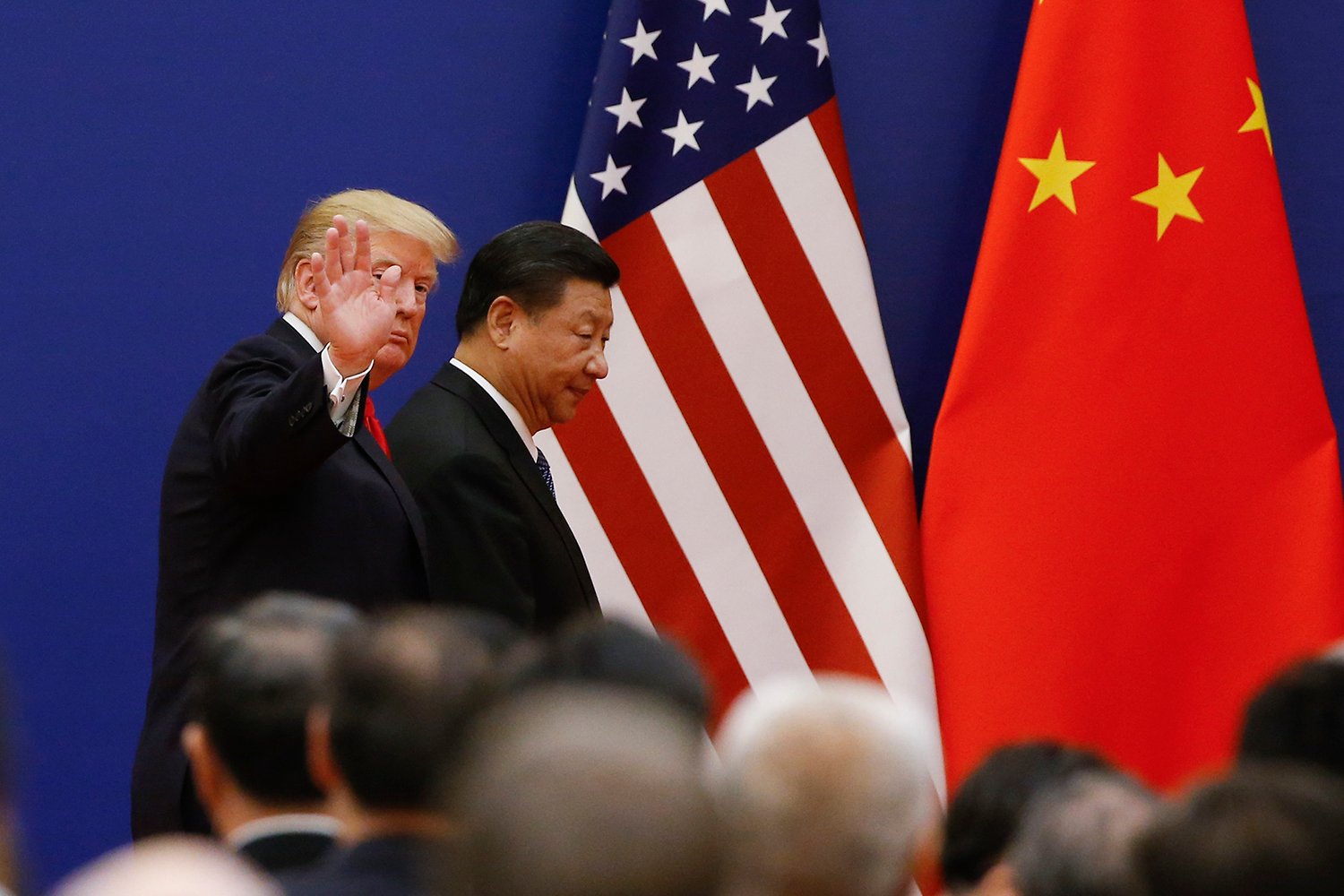Emma Ashford recently laid out four explanatory models for the Trump administration’s chaos, suggesting that its radical change in U.S. foreign policy could be understood through the following: a return to realist realpolitik, foreign policy as an extension of domestic policy, a potential return to Trump-Reagan foreign-policy fusionism, and simple Republican infighting on foreign policy. As Ashford noted, each model can explain some of the administration’s agenda, but they each equally fail to explain other decisions.
But conspicuous by its absence is a fifth model that might help explain the seemingly chaotic and contradictory decisions: ideology. What may seem like a nonsensical constellation of foreign-policy positions presents a coherent list of desired friends and hated enemies when viewed through the lens of the ideological worldview that animates key decision-makers in the executive branch.
Such an ideological approach is often uncomfortable terrain for foreign-policy realists, but its facility in explaining the decisions of historical regimes is considerable, particularly for relatively closed, personalistic ones. As Andrew Roberts observed in his book, The Storm of War, Adolf Hitler’s foreign-policy decisions, which were often inexplicable from a strategic perspective, were perfectly congruent ideologically: He lost the war for the same reason he started it—“he was a Nazi.”
Likewise, as Adam Tooze noted in his book, The Wages of Destruction, the demands of war production were often subordinated to the ideological objectives of mass starvation and extermination under the Nazis. Stephen Kotkin, meanwhile, emphasized in Stalin: Paradoxes of Power that once in office, Joseph Stalin’s decision-making was decisively shaped by the fact that he was a sincere Marxist-Leninist. Equally, Vladislav Zubok wrote in Collapse: The Fall of the Soviet Union that many of the failed decisions at the Soviet Union’s end came from the fact that the men making them, particularly Mikhail Gorbachev himself, were sincere Leninists.
Such considerations are hardly limited to recent governments: Imperial ideology played an important role, for instance, in shaping Roman decision-making over centuries. Nor is it merely a product of the history books. Challenged to explain his decision to invade Ukraine, Russian President Vladimir Putin has repeatedly leaned on ideological explanations rooted in Russian nationalism and imperialism.

So how does ideology look as a model for understanding the Trump administration? This requires first sketching the administration’s ideological worldview, with the necessary caveat that individual members likely differ in their attachment to any given component, and then testing that worldview against the foreign-policy agenda that we’ve seen thus far.
Ideologically, we might say the Trump administration is personalistic, far-right authoritarian, and post-liberal, favoring unchecked executive power while indifferent, if not hostile, to the rule of law. It is ideologically opposed to transgender rights, supportive of traditional religious expression, particularly Christian religious expression, and hostile to globalization. Many actors within the administration have a history of racist or white nationalist statements or sentiments. Can we understand the Trump administration’s foreign-policy agenda through this framework?
Let’s look at its policy in Europe. While realists have attempted to frame U.S. efforts to back out of supporting Ukraine through a realist-restrainer lens, such an approach struggles to explain the whole of the administration’s strategy in the continent, like the unveiled contempt for allies or imposing tariffs on friendly European countries but not hostile states like Russia or Belarus.
Most recently, the administration has been moving forward with a cease-fire deal that demands huge sacrifices from Ukraine in order to give Putin nearly all of his demands, going well beyond being a neutral broker in the process. But these apparently contradictory policies make perfect sense if one assumes that the administration views itself as ideologically similar to Putin’s Russia as a fellow personalist, anti-liberal, and anti-LGBTQ authoritarian regime. Indeed, figures with considerable ideological influence in the administration, like Tucker Carlson, have gone out of their way to praise Putin’s Russian autocracy.
One complication in any realist-restrainer picture of the administration is, of course, its “continued focus on the Middle East” or, in particular, its “willingness to give Israel carte blanche.” From a realist perspective, such actions—extending to the administration’s substantial expenditure on munitions and drones over Yemen—make little sense.
But viewed through an ideological lens, the administration is supporting an Israel that is increasingly backsliding into a personalist, illiberal regime itself and which some members may view as a fellow Western state that is fighting against enemies that are both racial and religious “others.” In short, even as Israeli and U.S. interests in the Middle East potentially diverge, the Trump administration may view Israel as an ideological ally all the same.
By contrast, of course, the administration remains notably hostile to China, as exemplified by its intense and punitive tariff regime. From a realist perspective, the difference in treatment of Russia and China, which are both autocratic regimes with revisionist foreign-policy goals aimed at upending portions of the post-Cold War order, seems inexplicable.

But from an ideological perspective, Russia is a white and right authoritarian regime that is premised on Christian traditionalism, whereas China is a left authoritarian regime with a communist tradition and racially “other.” While both states are potentially hostile competitors, China is an enemy from the left, whereas Russia, despite its revanchist territorial aims, is an ally from the right.
U.S. President Donald Trump’s tariffs are another area of sharp deviation from traditional Republican orthodoxy, which, as Ashford noted, realist assessments struggle to explain. However, the pursuit of economic autarky has been a core ideological goal for a range of personalist, authoritarian regimes on both the right and left. The pursuit of autarky as a means of excluding the influence of international economic systems imagined to be Jewish-controlled was a core ideological mission of the Third Reich, despite being bad economics, motivating much of Hitler’s aggression—including his disastrous invasion of the Soviet Union.
The Soviet Union also attempted autarkic economic policies in the 1920s and 1930s. Such efforts may serve a domestic purpose, and even though more autarkic economies are poorer and less productive, they are more under the control of their authoritarian leaders. At the same time, such policies arose out of ideological imperatives to include corrupting foreign influences, whether out of anti-capitalist or antisemitic ideology. Trump’s pursuit of tariffs seems equally ideological: “He just likes tariffs,” he thinks “trade is bad,” and he has surrounded himself with advisors who think the same.
Likewise, as Ashford admitted, the administration’s efforts to defund major soft-power assets make little sense from a realist perspective, but they fit neatly with its ideological aims. While a realist might understand cuts to programs like Voice of America, Radio Free Europe, and Radio Liberty undermining U.S. soft power, pro-democracy organizations like these are the opposition for an administration committed ideologically to personalist authoritarianism.
Trump administration cuts to the U.S. Agency for International Development (USAID), particularly its remarkably successful PEPFAR program, make little sense from a realpolitik perspective but fit ideologically within a white nationalist perspective as much of USAID’s most prominent work is done in Africa.
Attacks on PEPFAR, a program created by the second Bush administration and championed by Republicans, makes little sense in terms of both soft power and traditional Republican politics. But it is not hard to imagine why white nationalists, for whom the fear that the nonwhite population will swamp the white population is core to their ideology, might want to discontinue a program that has saved tens of millions of African lives.
The administration’s decision to shut down nearly all routes for refugees to claim asylum in the United States while opening a door specifically to white South Africans similarly points to this agenda.

Of course, such an ideological approach hardly rules out infighting, given the various ideologies of the administration’s many members. Such variance was on display in the leaked “Houthi PC small group” signal chat, where U.S. Vice President J.D. Vance’s ideological opposition, that he “just hate[s] bailing Europe out again” contrasted with then-National Security Advisor Mike Waltz and Defense Secretary Pete Hegseth’s determination that the strike was necessary and only the United States could fill the role.
In short, many of the Trump administration’s otherwise inexplicable foreign-policy decisions are, in fact, perfectly explicable in the context of a foreign policy driven by a MAGA ideology that is personalist, authoritarian, anti-globalist, and white nationalist. Recognizing this is important, because an ideologically driven government may act in ways that, while not consistent with realist analysis, stated domestic policy objectives, or party traditions, are still predictable.
An observer in 1936 attempting to understand and predict the actions of Nazi Germany or imperial Japan entirely through realpolitik was bound to be surprised, as many were at the time, when those regimes engaged in mass murder, attacked neutral powers, and went to war with nations far larger than them in population and production, to their great ruin. Instead, many observers discounted the extreme sounding rhetoric, until and in some cases even well after that rhetoric became reality.
But the same observer would hardly have been surprised if they merely assumed that Nazi or Japanese leaders meant what they said in their darkest speeches. Equally, attempting to understand Putin’s decision-making through a conventional policy lens caused many to be surprised by his disastrous invasion of Ukraine, but those armed with an understanding of his ideology had little difficulty processing his decisions.
Attempting to understand the Trump administration’s decisions purely through the lens of realpolitik, domestic policies, Republican party traditions, or power-politics infighting is bound to render quite a few decisions as confusing. But an analysis that key administration actors are, quite bluntly, racists and fascists will find that the Trump 2.0 foreign policy makes a distressing amount of sense.
The post Ideology Is the Key to Understanding Trump’s Foreign Policy appeared first on Foreign Policy.




